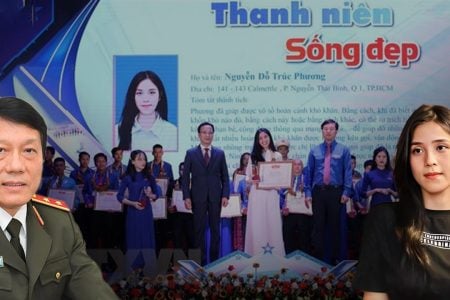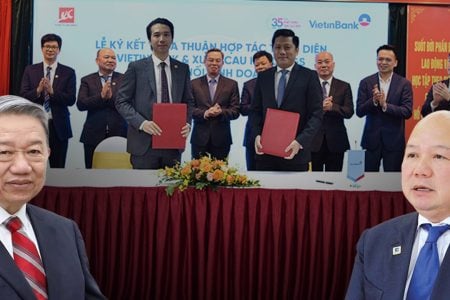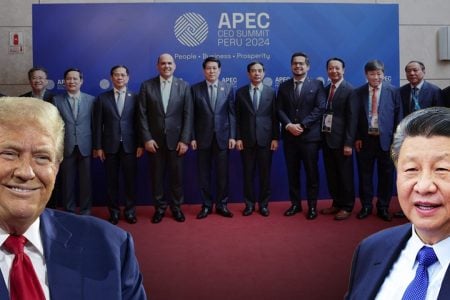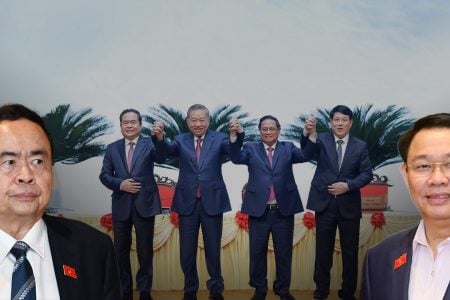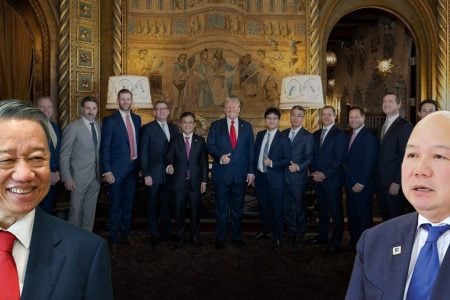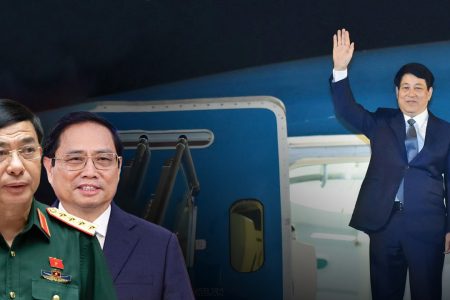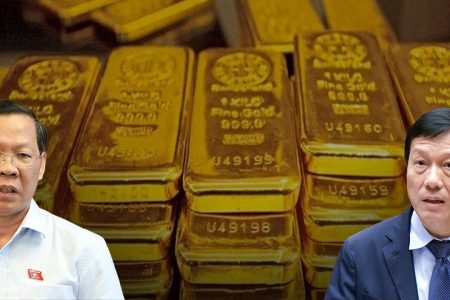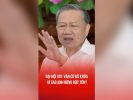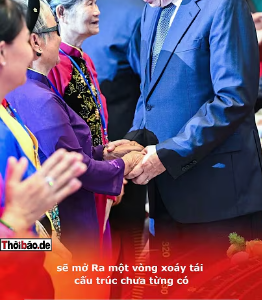
Based on China
Public opinion is stirred by the fact that Cambodian Prime Minister Hun Sen, during the 26th Future of Asia conference, which took place online on May 20, strongly defended the „close“ relationship between Phompenh and Beijing. He also asserted: „If I don’t rely on China, who will I rely on? If I don’t ask China, who do I ask?“
Hun Sen’s attitude is typical of Southeast Asian leaders seeking economic support and vaccine aid from China. But the experience from the Philippines in relations with China will probably be a better lesson for Southeast Asian countries to refer to.
The Philippines is „waking up„?
Philippine Defense Secretary Delfin Lorenzana on March 21 criticized China’s „massive army“ of 220 armed fishing boats operating around Whitsun Reef in the South China Sea. According to Lorenzana, this action is a provocative act within the Philippines‘ Exclusive Economic Zone and its continental shelf, in violation of international law and the 2016 South China Sea Arbitral Tribunal’s indictment. The Philippine delegation sent a protest note to the Chinese Embassy in Manila almost daily, demanding that Beijing quickly withdraw its ships and naval assets from all the locations claimed by the Philippines in the Truong Sa (Spratlys). On April 13, the Philippine Department of Foreign Affairs even summoned a Chinese envoy to Manila, the first time since President Rodrigo Duterte came to power in 2016. These developments show the strategy of Philippine President Duterte. — that is non-confrontational, on the contrary, that is close to China, despite the damage, it has done to the security alliance with the United States — has not changed China’s behavior in the South China Sea. This is not surprising as China’s belligerent, militarized and fishing actions – often to the detriment of Filipino fishermen – have long been the basis of China’s maritime strategy before Duterte took office as president.
Looking ahead to the 2022 national elections, Manila is likely to return to a more confrontational stance against Beijing. In the race to become Duterte’s successor, potential presidential candidates – including his closest political allies and members of Duterte’s cabinet – will deliver keynote campaign speeches with an anti-China stance, which Duterte did and helped him win the 2016 election. In the context of the opposition and the people growing anti-China stance, a solid choice for the Philippines to re-establish a security alliance with the United States. Joint patrols with allies, exercises, and deployment of US military assets to the Philippines will be a strong response to the provocative actions of China’s maritime militia vessels.
Since the outbreak of tension in the Whitsun Reef area, the US and Philippine officials have proposed a number of measures to strengthen defense cooperation between the two countries, including increasing identification of threatening situations in the South China Sea. US officials reiterated that the Mutual Defense Treaty (MDT) would be triggered if China attacked Philippine ships, aircraft, or troops in the South China Sea. The Balikatan exercises – the largest annual exercise between Washington and Manila – were also restarted on April 12. Joint efforts to strengthen the MDT and the 1999 Visiting Forces Agreement (VFA), an agreement that allows Washington to maintain jurisdiction over U.S. troops stationed in the Philippines, should be seen as a response to the failure of Duterte’s appeasement strategy.
Philippine Foreign Secretary Teddy Locsin Jr also wanted to expand the „coverage“ of the MDT, rather than just being limited to attacks on the Philippine public and military ships, to give Manila more reason to invoke the MDT. Other Philippine security experts recommend that the Philippines reconsider joint maritime patrols with the US in the South China Sea as a symbol of their „glue paint“ alliance. Despite Duterte’s anti-US rhetoric, there are several reasons why the Philippines is still seen as a close US ally:
First, the Philippine defense apparatus maintains a close partnership with the US military due to decades of training and professional exchange between the two sides. The Ministry of Defense has made a clever move to suspend the termination of the VFA agreement. After Duterte threatened to cancel the VFA with the US, Defense Secretary Delfin Lorenzana stated that the Philippine military largely supported the agreement.
Second, during Manila’s military modernization, the Philippine military benefits from regular exercises and capacity building with US forces. Washington has provided military aid worth $765 million to the Philippines since 2015, making the Southeast Asian nation the largest recipient of US military aid in the Indo-Pacific region.
Third, 60% of Filipinos consider the US to be their most trusted foreign partner, while China is one of their least reliable. President Duterte’s failure to handle the COVID-19 pandemic – with his over-reliance on China’s Sinovac vaccine and ignoring China’s behavior in the South China Sea – further contributed to rising attitudes against China in the Philippines.
Fourth, the alliance goes beyond high-level security discussions and exercises. The Philippines has strong public support to address non-traditional security threats such as disasters, natural disasters, marine environmental threats, and climate change.
Given the strong public support for Washington’s role in Philippine security policy, Duterte may be under pressure to abandon his defeatist strategy in relations with China, including his refusal to condemns China’s deployment of maritime militia in the South China Sea.
The case of Vietnam
The story of Cambodia and the Philippines will be a good lesson for Vietnam to refer to. Vietnam is a neighboring country that has a lot of „debts“ with China. In particular, the two countries have similar institutions and ideologies, with the sole rule of the Communist Party. However, there is a big gap in the perception of China between the Vietnamese leadership and the people. The leaders of the Communist Party of Vietnam always consult with Beijing, and Vietnamese officials are always sent to China for training while the people express hatred towards China.
The Diplomat website on May 21 cited the latest Asian Barometer (ABS) survey results showing that in Vietnam, China has more influence, but with a less positive image than the US.
The latest ABS data shows that more than 50% of Vietnamese respondents believe China is the most influential in Asia, while only 14.67% choose the US. Back in 2010, 43.32% of respondents considered China the most influential country in Asia, while only about 10% chose the US. Interestingly, while both countries have been expanding their influence since 2010, the gap between China and the US has widened and China continues to outgrow it.
Although China has relatively more influence in Vietnam, in general, China’s influence over Vietnam is not positive. Only 25% of Vietnamese respondents believe that China has a positive impact on their country, while for the US, this figure is up to 85%. In other words, the overwhelming majority of respondents support the US, welcome Washington to come and expand its influence in Vietnam.
Experts say that one of the biggest reasons for this difference is the rising tension in the South China Sea dispute between China and Vietnam. Recently, China’s increasing assertiveness and actions in the South China Sea have sparked „anti-China“ sentiment and anti-China protests in Vietnam. Vietnam is likely to build a stronger partnership with the US and seek support from Washington to achieve its national interests in the South China Sea.
Thoibao.de (Translated)








